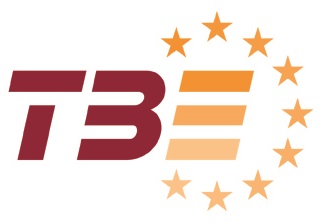The technological progress made in the last decades profoundly modified the look of brick and roof tile plants. Today, kilns are fully automated and heat recovery systems optimise the overall energy efficiency. Furthermore, modern process technology ensures that the environmental impact is minimal. Research and development projects are looking into those elements which will shape the plants of tomorrow, such as alternative sources of energy, new energy efficiency technologies, recycling of final products and the use of recycled raw materials.
Example of production of extruded bricks and handmade bricks
Quarrying
The clay brick and tile industry is an extractive industry relying on natural resources for its raw materials. Manufacturing plants are frequently situated alongside clay deposits or sand quarries thereby minimising the energy expended in transporting material to the factory. Voluntary codes of practice adopted by the industry cover all aspects of extraction and restoration, including site appearance, prevention of pollution, reduction of ecological impact, restoration and aftercare. Once restored, exhausted clay pits can be transformed into nature reserves, amenity lakes or waste repositories.
Raw materials preparation and shaping
After extraction from quarries, the clay raw material is laid out in order to obtain a homogeneous mixture. The clay is prepared in several stages. It is stockpiled, then crushed to attain the required grain size and finally stockpiled again for several days or even months. The moisture content is controlled before processing; at this stage it may be necessary to add water to obtain the right consistency for forming. Materials such as sawdust or residue from the paper industry can be added to increase the porosity of the final product. For bricks, the clay is extruded or moulded to obtain the shape required and then cut to size. In roof tile making, the clay can undergo a two-stage process, the second of which may occur after extrusion, depending on the roof tile being manufactured. For example, for interlocking tiles, the extruded clay is pressed between two moulds.
Drying and firing
The shaped clay product is first dried in order to reduce its moisture content and then loaded into kilns for firing. High-temperature firing gives our products their exceptional properties, long lifespan and durability. Drying and firing are the most energy-intensive steps of the production process and the industry has made major investments to reduce energy consumption and CO2 emissions. The key improvements are linked to the development of better designed driers and kilns, the recovery of excess heat from kilns, the use of high-speed burners and the automated control of drying and firing regimes. Further emissions reductions have been achieved through the improvement of the energy mix. In most cases, natural gas has replaced more CO2-intensive fossil fuels (like coal, oil and petcoke) and renewable energy sources like biomass are used when available and economically viable.
Packaging and storage
Once the firing process is completed and the products have cooled they are packed and made ready for dispatch. The process is subject to rigorous quality control throughout all stages of production.



